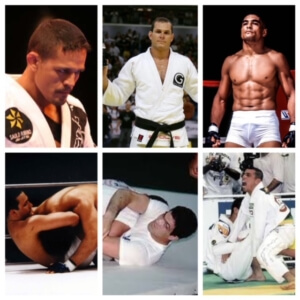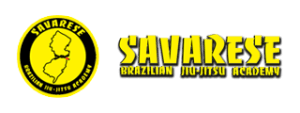A tip for getting better at BJJ
Mentors in BJJ: I am a huge believer in the idea of taking on grappling mentors, usually someone with a similar body type as you, or just outstanding figures in the art Of Brazilian Jiu-Jitsu who you believe have some characteristics that strongly appeal to you or which you believe could greatly improve your performance and direction if you were to implement them. Some truly great grapplers who dazzled the sports of grappling and MMA (earlier known as NHB or No Holds Barred) when they entered ADCC, the World BJJ Championships or the UFC or Pride inspired me These legends were Rickson, Royler, Renzo and Roger Gracie as well as Saulo Ribeiro and Jean Jacques Machado. Watching and studying ALL of them had a huge impression on my BJJ. Of course my Instructors had the most but film study has always been a huge part of my BJJ and these are the men were who I studied the most. I even studied Leticia Ribeiro because her X-Guard was awesome. Jean Jacque for his guard and the way he blitzed his weight division on several occasions, it was not just that he won that was so impressive, it was the WAY he won. There was not a moment wasted on the mat, he embodied what I take as the ideal of Jiu-Jitsu. His BJJ always had a purpose, purposeful movement towards head control that lead to submission. Royler for strategy, something I learned masterfully training under him. Renzo, man, I owe so much to him, I learned so much from him. Rickson for the way he capitalized on mistakes (and forced them) If you wanted to show a curious friend what great grappling looks like and were looking for exciting and technically flawless matches you could not do better than Rickson Gracie. Roger and saulo for their passing mastery and Saulo’s standup was always amazing. Roger was like watching a genius. From the start of the match until the inevitable submission finish it was a hustling bustling flurry of well directed attacks in combinations that flowed evenly between position and submission and created tactical pressure rather than physical pressure, watching this pressure crack his opponents was one of the most instructive lessons of my own development. Trying to recreate that sense of efficient and unrelenting attack has been a big part of my work, and todays grapplers are still using his style (Roger heavily influenced John Danaher, so his guys mimic Roger’s top game often) and it should be yours too.

Mentors in BJJ
This is my opinion of Why BJJ is so effective…Clarity of purpose. Here at Savarese BJJ Academy (bjjlyndhurst.com) we truly believe that one of the great reasons why classical Brazilian Jiu-Jitsu is so successful as a martial art is it’s incredibly simple and clear basic directive. You can explain it to a total beginner in two minutes and it’ll make total sense to them. In fact, it’s so clear that I believe if you took two completely untrained people with no fighting experience of similar size and strength and explained the basic directive of Jiu-Jitsu to one of them but not the other, the one who had been taught that basic directive would have a considerably higher chance of victory if they fought each other, not because they have gained any skill, they haven’t, but just because they now have an effective and proven sense of direction while the other only has his instincts. When one person has a sense of direction and purpose in a crises and the other doesn’t, I’ll put my money on the person with a sense of direction and purpose every time. What is this basic directive of BJJ? It can be stated in a single sentence. Work your way to the mounted or back position and once there, establish control and finish your opponent. It doesn’t matter whether it’s grappling or fighting. If you follow that simple directive and have the skills to do it against the resistance of your opponent, you’ll be a very difficult challenge for sure against anyone. Remember always that every rule, point allocation, recommendation, technique and tactic of Jiu-Jitsu is just a means to satisfying this basic directive. Never lose sight of its clarity and you’ll always know what to do and how to train and prepare.
How to coach new students in BJJ is always up for debate. Here at Savarese BJJ Academy (www.northnjbjj.com) , we always think long term. Coach the big picture first. The growth and development of any given technique in our repertoire follows the same pattern as the growth and development of our physical bodies. A technique starts off weak and vulnerable, unable to survive on its own. Then it grows into early development where it begins to mature into early adulthood. Finally it enters into a mature phase where it can not only survive on its own, but work with others, improve itself and rise to prominence. When first coaching a move to a student, I always begin with the big picture. What is the general nature of the move? What are it good and bad points? What are the main things to focus upon? What are the broad movements required for its execution? Sketch the outline first, THE DETAILS CAN ALWAYS COME LATER. Just get them moving in the general directions they need. Just as an artist begins with a sketch and only then brings in the complexity of colors fill the canvas and create a masterpiece over time, so too, The martial artist must begin with the rough outline of the move and over time, add details as a painter adds color to complete a picture. In all technique development , start with general movement and over time refine it with precise movement. Don’t be obsessed with precision at the start, that will come later.
The greatest compliments we could ever receive are the kind words you share with others.
